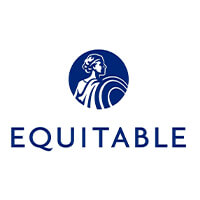What is Critical Illness Insurance?
Advantage Group's critical illness insurance is a type of insurance that provides financial protection to individuals facing serious health challenges. Unlike regular health insurance, which covers medical expenses and treatments, critical illness insurance offers a lump sum payment to the policyholder if they are diagnosed with a specific, predefined critical illness listed in the policy, such as cancer, heart attack, stroke, or organ transplant, among others.
This payment can be used by the insured to help cover various expenses during their recovery period, such as medical bills, daily living costs, or even necessary lifestyle adjustments. We offer these plans to alleviate the financial burden that comes with battling a severe illness, allowing individuals and their families to focus on recovery without worrying about the costs.

How Our Clients Benefit from Critical Illness Insurance:
- Financial security during serious illness
- Flexibility in fund usage
- Peace of mind for loved ones
- Affordability and accessibility for the coverage you need
- Supplement to disability insurance
- No restrictions on fund usage




Frequently Asked Questions
Health Insurance is important but does not cover everything. During a major illness or accident your health insurance does not cover things like your house/rent payment, car payments, cell phone bill or groceries. These programs pay you cash and that money can cover these expenses.
Gap filling in insurance refers to the process of identifying and addressing coverage gaps in an individual's or business's insurance policies. These gaps occur when certain risks or potential losses are not adequately covered by existing insurance plans. The consultant's role is to conduct a comprehensive analysis of the client's insurance needs and current coverage, and then recommend appropriate additional insurance policies or endorsements to bridge these gaps. By filling these voids in coverage, the insured can attain a more comprehensive and well-rounded protection against various risks and ensure financial security in the face of unexpected events.
Let's say you've recently purchased a brand new car for $30,000, and you financed it through a loan or a lease. In this situation, you are required to have comprehensive and collision insurance by your lender or lessor to protect their financial interest in the vehicle. This insurance coverage will pay for damages to your car in the event of an accident, theft, or any other covered incident.
Now, imagine that six months after purchasing the car, you unfortunately get into an accident, and the car is completely totaled. The comprehensive and collision insurance will cover the actual cash value of the car at the time of the accident, which could be significantly less than the initial purchase price. This is due to the depreciation that occurs with new vehicles as they lose value over time.
In this scenario, the payout from the insurance company may only be $24,000, reflecting the depreciation that occurred during those six months. However, you still owe $28,000 on the car loan or lease, as you've only made partial payments.
This is where gap insurance comes into play. Gap insurance is designed to cover the "gap" between what your car is worth at the time of the accident and the amount you still owe on the loan or lease. In this case, gap insurance would cover the remaining $4,000 balance, so you won't be left financially responsible for the difference.
Gap insurance is particularly useful for individuals who have financed a new car with a small or no down payment, as they are more likely to experience a significant gap between the car's value and the outstanding loan amount in the early stages of ownership when depreciation is at its highest.
Based in Schofield, WI and servicing the following states.
Ready To Help, Wherever You Are
Arizona
Colorado
Florida
Iowa
Oklahoma
Oregon
Minnesota
Michigan
North Dakota
Texas
Wisconsin
